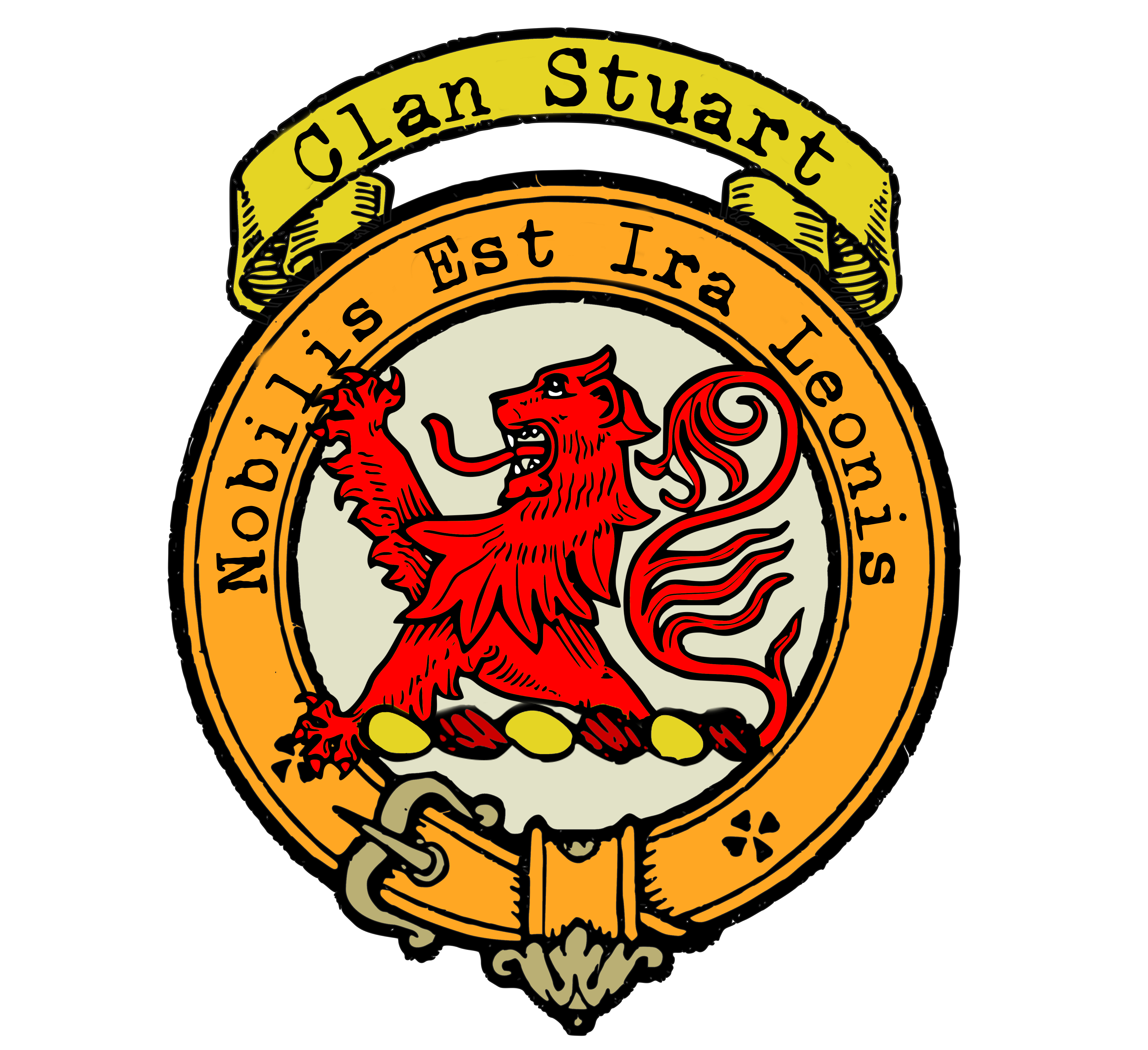Clan Stuart
|
|
CREST: a demi-lion rampant gules, armed and langued Azure MOTTO: Nobilis est ira leonis TRANSLATION: The lion’s anger is noble VARIATIONS: Stewart |
| The story of Clan Stuart begins in Brittany, France, where the Stewards of Dol, also known as seneschals, were first documented. In 1124, they made their way to Scotland through England when David I returned to claim his throne. This marked the humble beginnings of a clan that would rise to astonishing prominence.
The Stewards quickly ascended to power, earning the title of hereditary high stewards of Scotland. This position not only conferred authority but also set the stage for their future role in Scottish history. It was through shrewd marriages, including one to Marjory, the daughter of Robert the Bruce, that they solidified their claim to the Scottish throne. Robert II, who reigned as Robert II, bestowed upon his son John the lands of Bute, Arran, and Cumbrae. These lands were elevated into a county, and John was appointed hereditary sheriff. The family’s influence was cemented by a charter in 1400 by Robert III, confirming their hereditary sheriff status. In 1498, James IV granted Ninian Stewart the esteemed title of hereditary captain and keeper of the royal Castle of Rothesay, an honor still held by the family today. This distinction is proudly displayed in their coat of arms. Over the centuries, the Stewarts of Bute witnessed a succession of family members holding positions of authority, from James to John, who served as a Commissioner for Bute in the Scottish Parliament. The family retained the unique spelling of their name, introduced by Mary, Queen of Scots. Sir James Stuart of Bute was created a Baronet of Nova Scotia by Charles I in 1627. During the English Civil War, he garrisoned the Castle of Rothesay and raised troops for the king. Unfortunately, he was forced to flee to Ireland as Cromwell’s forces triumphed, and his estates were seized. Sir James Stuart’s grandson became the Earl of Bute in 1703 and held various titles. He initially supported the union with England but later staunchly opposed it. He played a significant role in politics, including being Commissioner for Trade and Police in Scotland and Lord Lieutenant of Bute. John Stuart, the third Earl, played a pivotal role in concluding a treaty with France in 1763, effectively ending the Seven Years’ War. His efforts in both diplomacy and politics left a lasting legacy. The second Marquess, John Lord Mount Stuart, was an industrious figure who transformed Cardiff into a major coal port. The Stewarts also had interests in heraldry, archaeology, mysticism, and high art, leading to the restoration of iconic castles like Castle Coch and Cardiff Castle Today, Clan Stuart is a vibrant part of Scotland’s cultural heritage. The present chief, Johnny Dumfries, succeeded his father as the sixth Marquess in 1993. His late father, Lord Bute, was a passionate advocate for Scottish heritage and received a knighthood in recognition of his efforts. |
|
Citations:
|
|
Purchase @ Redbubble
Purchase @ Amazon.com
Purchase @ Amazon.co.uk

